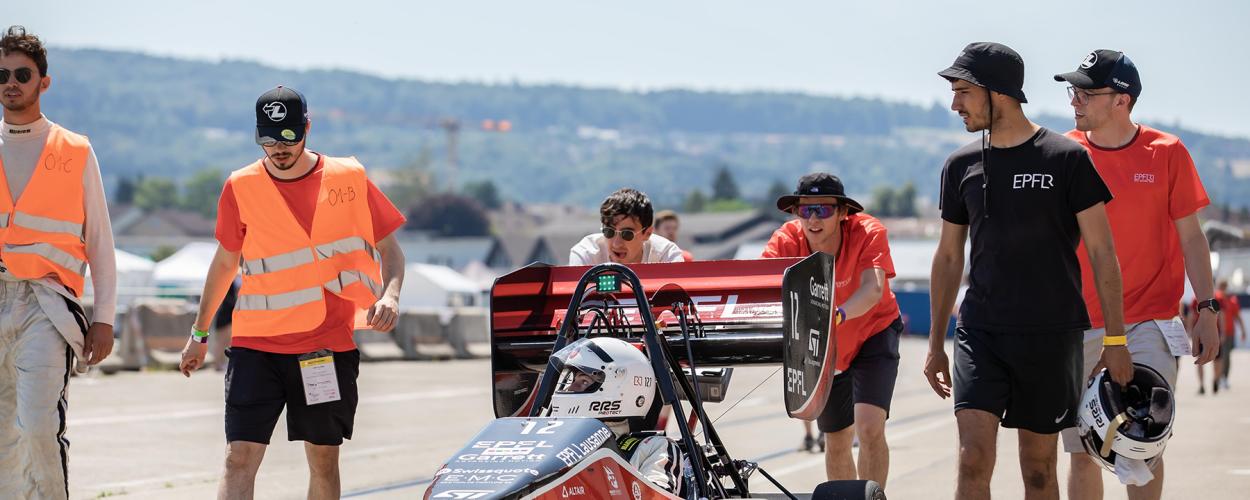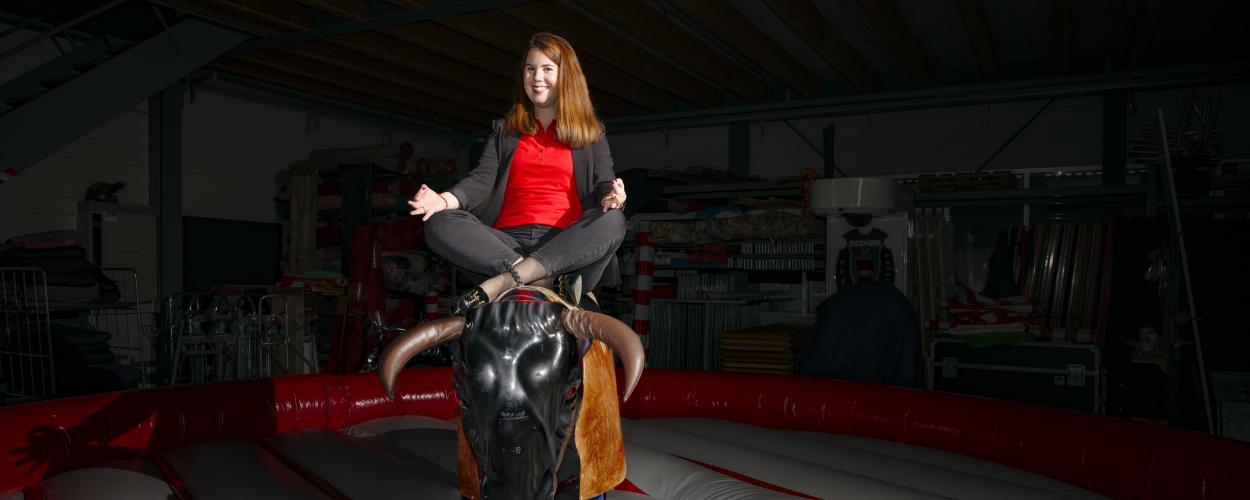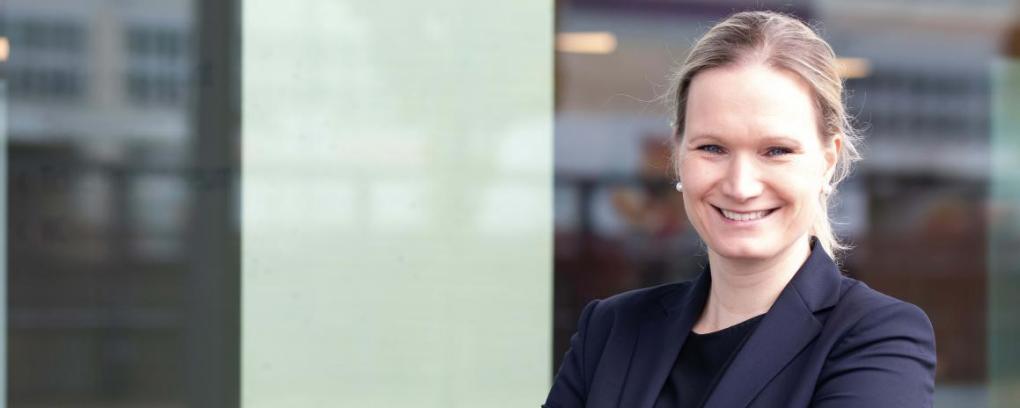Table of Contents
- EPFL Racing Team: Like a Startup, but without Salaries
- What Is Formula Student?
- Thirty Thousand Hours of Work for a New Car
- Balancing Act between Studying and Working
- A Springboard Even to a Job in the Financial Sector
- EPFL Racing Team Aiming for a Spot in the Top 3
- EPFL Racing Team: This Year with Artemis and 110 Horsepower
A weight-to-power ratio of less than 2 kilograms per horsepower and an acceleration time of under three seconds from 0 to 100 kilometers per hour. That’s faster than a Lamborghini Huracán, a Mercedes-AMG GT S, or an Audi RS e-tron GT. But we’re not talking about something like a McLaren Senna here — we’re talking about Artemis, an electrically powered car developed by students at the Ecole Polytechnique Fédérale de Lausanne (EPFL).
EPFL Racing Team: Like a Startup, but without Salaries
It’s Saturday noon and at the airfield in Dübendorf, the sun is beating down on the tarmac in scorching 30-degree weather. There’s lots of hustle and bustle going on in a hanger adjacent to the runway because this weekend marks the holding of the first race of the Formula Student series, a competition like Formula One but different — and with a lot less money involved.
Despite all of the tumult in Pit Alley, Alex Reis de Matos doesn’t appear to be stressed out at all. “We just passed the rain test as one of only three teams to manage that,” he says joyfully. Alex Reis de Matos is a master’s student in data science and the CEO of the EPFL Racing Team. CEO — yes, you read that right — because this isn’t just some small student project. A total of 77 students from 11 different degree programs work in nine different units almost year-round to win the championship. “We’re a startup that doesn’t pay its employees any wages,“ as he aptly describes it.
What Is Formula Student?
But back to the beginning: What is Formula Student all about? The CEO explains that “Formula Student is a worldwide engineering competition for university students. We at the EPFL participate in the European leg of the competition. We compete with a car that was developed entirely by students and get tested in different categories. It isn’t just about pure speed. Our business plan and the design of the car also get rated, for example.”
Thirty Thousand Hours of Work for a New Car
Race weekends are the reward for the hard work that the team puts into developing the car. Because just like in Formula One, the EPFL Racing Team develops a new car each year for Formula Student. Alex Reis de Matos does the math: “Ten hours a week times 80 people for around 35 weeks — that puts us somewhere in the area of 30,000 hours.” That’s how much time the team invests in developing a new car, and the students do it alongside their bachelor’s or master’s program.
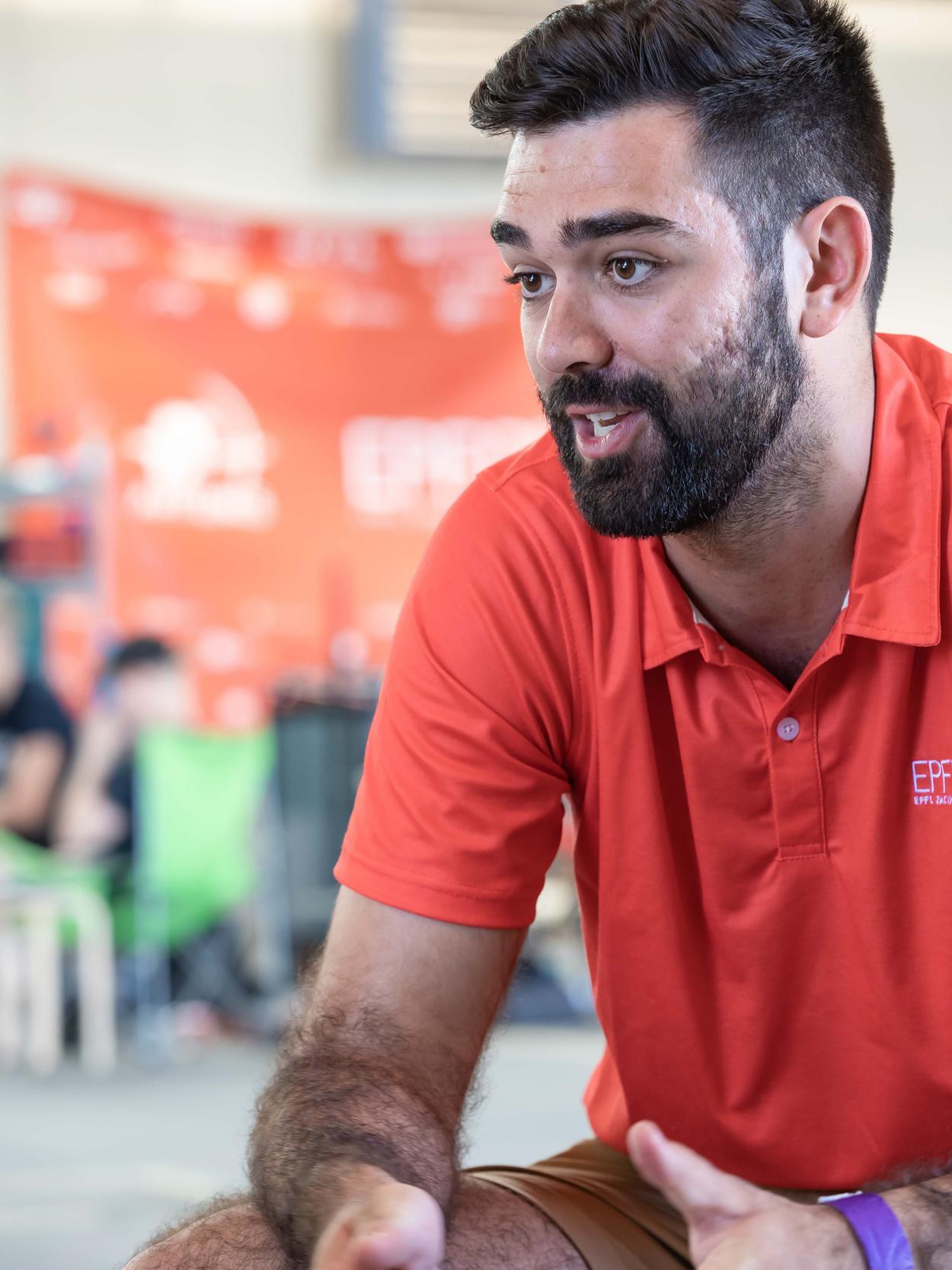
Last year we received 130 applications for fewer than 80 jobs, and this year there were even more.
Alex Reis de Matos, CEO EPFL Racing Team
Balancing Act between Studying and Working
Why do students inflict that on themselves? “On one hand, to gain experience. Students can put theory into practice by working with us. That naturally looks good on CVs. On the other hand, we love cars and do all of our work with passion,” Alex Reis de Matos says. Sometimes, though, priorities can also shift, he adds. “If your goal is to finish a master’s with straight As, then the EPFL Racing Team project isn’t right for you. Managing to earn a master’s degree at the same time is doable, but can be pretty tough going,” he explains.
Nevertheless, the team has no shortage of job applicants. Quite the contrary, in fact. “Last year we received 130 applications for fewer than 80 jobs, and this year there were even more,” he recounts.
A Springboard Even to a Job in the Financial Sector
And afterwards everyone signs on to a job in the automotive sector? Alex Reis de Matos denies that: “Most of the people on the team will not go on to work in the automobile industry after they’ve finished their studies. I won’t either. I’m more interested in working in the financial sector.” Because even though Formula Student revolves around cars, the students on the EPFL Racing Team learn skills that help them get ahead in all kinds of industries.
EPFL Racing Team Aiming for a Spot in the Top 3
Back to the airfield in Dübendorf. The car has a problem with its front wing, and the team is working feverishly to fix it because if the car isn’t ready to go within the next 45 minutes, it won’t be able to take part in the acceleration competition, which essentially is a 75-meter drag race. Shortly before the clock runs out, the problem appears to be solved. A good dozen people sprint to push the car toward the starting line. In the meantime, Alex Reis de Matos doesn’t seem so calm and composed anymore. And his fears prove true. The car doesn’t start. Zero points for the team. “It’s the first event of the season,” the CEO says. “Not everything works perfectly yet.”
Despite bowing out from this competition, the car posts a respectable result in the end. Altogether, the EPFL Racing Team finishes in fourth place in Dübendorf, one spot ahead of the team from the Swiss Federal Institute of Technology in Zurich. Not a bad showing, but Alex Reis de Matos sees more potential: “This year we want to consistently drive in the top three.” The season has just begun.
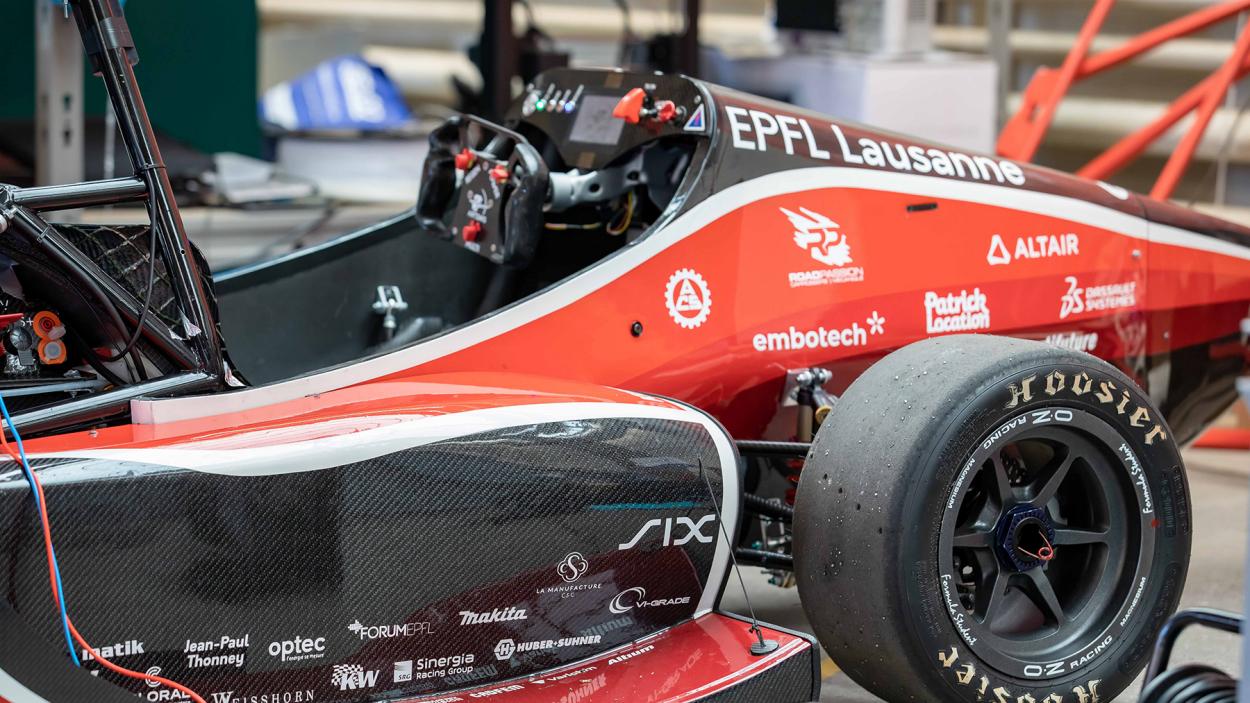
EPFL Racing Team: This Year with Artemis and 110 Horsepower
Artemis is the name of this year’s car being fielded by the EPFL Racing Team. Its two electric engines generate 110 horsepower. That doesn’t sound like much at first, but at a vehicle weight of only around 200 kilograms, this works out to a weight-to-power ratio that can definitely keep up with today’s super sports cars.
All of the car’s parts with the exception of the engines were manufactured by the students themselves, including the batteries. The money for it all comes from sponsors like SIX, whose logos are displayed on the vehicle’s bodywork in exchange, including on the car’s rear spoiler and front wing. They are conspicuously large because the car is extremely lightweight and thus needs lots of downforce to maintain traction on the race track.
SIX invests in bright minds and new talents. That’s why we sponsor innovative projects like the EPFL Racing Team that promote the advancement of young people. The professionals of tomorrow have an array of possibilities to put their acquired knowledge into practice at SIX as well through a wide range of internships or the SIX International Graduate Program, for example.
Find Out More Here
